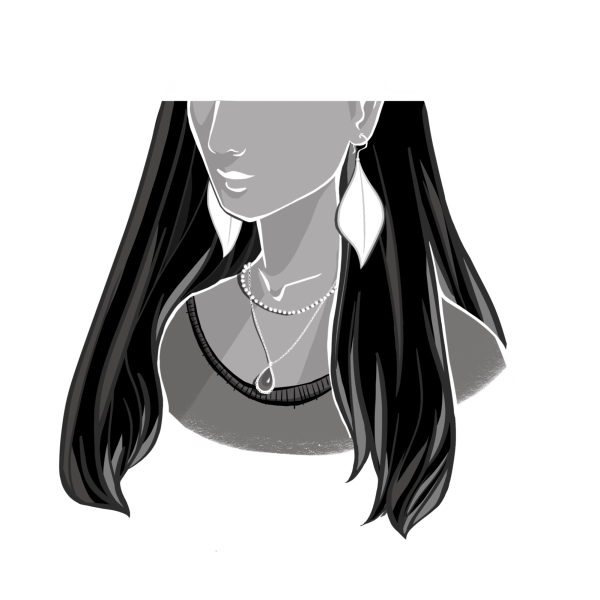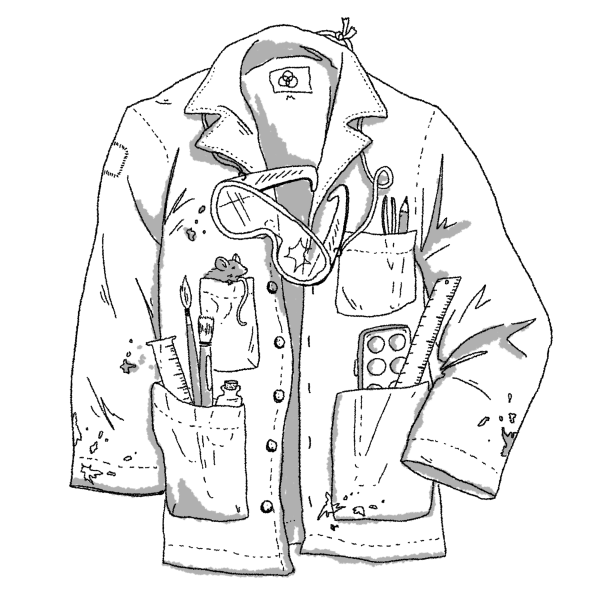DaMa Opens “Woman in Art”
Juniors Lauren Benedict and Maia Watkins took part in an event to combat an all-too overlooked facet of feminism: the underrepresentation of women in the art world.
May 5, 2016
A reinvention of the symbol used to represent women on restrooms, local photography highlighting the feminine aspects of nature and a canvas combining painting, poetry, and a three-dimensional mask are all art pieces one can find at the DaMa art exhibition entitled “Woman in Art.”
Juniors Lauren Benedict and Maia Watkins took part in an event to combat an all-too overlooked facet of feminism: the underrepresentation of women in the art world. Together with DaMa, a woman-owned winery three blocks from Whitman campus, the “Woman in Art” exhibition is still up through May 8 for the public to see.
Events which highlight and support women artists are relevant and increasingly important. Junior Lauren Benedict, a biology major, who works as an events planner at DaMa, was shocked and infuriated by the statistics about women artists that she came upon over the course of this project:
“I became quite angry when I was reading about this because I was reading about the underrepresentation of women in art, especially in higher up galleries. The statistic that really sticks with me is at the Metropolitan Museum of Art, in 2012, only four percent of artists being showcased were women despite that fact that in much of the art women are the subjects. That statistic is actually worse than it was in 1989.”
Junior Maia Watkins, an Art-Spanish double major, is one of the woman artists featured and displays her photography amongst experienced Walla Walla artists. She likes to describe the message of her photography as “subversive college feminism.”
Having a role-model in the art world has proven to be an exceedingly rewarding experience for her as she attempts to take what she learns from an academic setting and apply it to a real-world context.
“The other photographer said, ‘I don’t want you to undersell your prints. I want you to sell them at this amount or more.’ For me, that’s uncomfortable to hear at first because my immediate reaction is that my prints are not worth that much. It is important to have a mentor to say that your work is valuable and especially a mentor within the greater art community.”
The art community in Walla Walla surprised Watkins and Benedict—not only in the sheer number of artists, but in their commitment to one another. The website of ArtWalla, an organization that aims to bring together, support, and encourage the art community in Walla Walla, lists over one hundred artists.
Watkins reflected on the nature of a Whitman art education and the experience of getting of campus to see how art can translate into careers.
“I think about art in a very academic way. I think breaking out of that bubble and interacting with people that have been in the art world for a long time is helpful because it grounds your experience in your art and invites collaboration outside of Whitman.”
Both Watkins and Benedict speak fondly of their experience at DaMa. Watkins was thankful for the new perspectives it gave her in her arts education, and Benedict for the experience she gained as a leader and a member of the arts community.
The gallery features a mix of art forms: photography, mixed media, poetry, and more. One particularly interesting exhibition is one in which the symbol commonly used to represent women was transformed in various ways to show the multitude of ways womanhood can be defined and experienced.
An important experience to everyone involved, “Woman in Art” is an event not only for involvement with our greater community and engagement with the arts, but also as a chance to advocate for social change.
Benedict says foremost, the women involved in the arts community remark on the “joy they bring to one another.”
The “Woman in Art” gallery is free and open to the public at DaMa in downtown Walla Walla through May 8.








